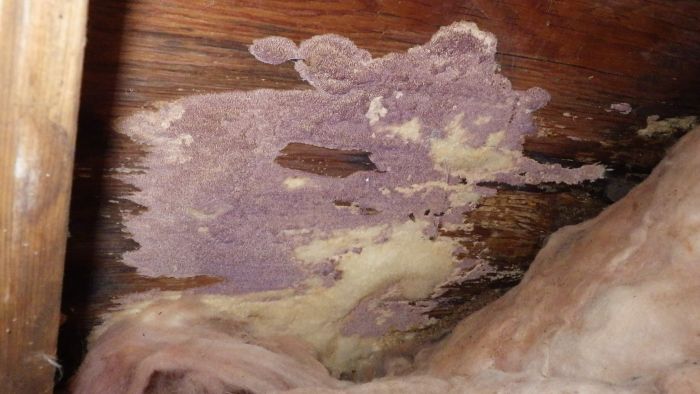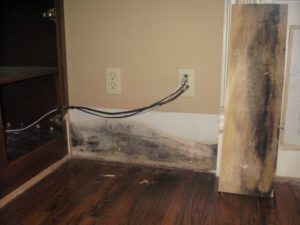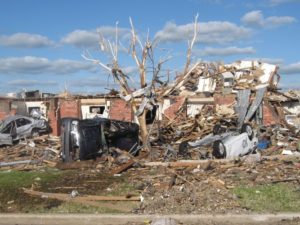Do water stains on your ceiling always mean you’re dealing with mold? Many homeowners worry about the marks left by leaks or condensation. But is this worry always justified? Knowing the causes and how to spot water stains can ease this worry.
Water stains do signal moisture problems that need fixing. But they don’t always mean mold. Mold can grow quickly in moist conditions with organic materials. Yet, factors like ventilation and quick action can prevent mold from growing from a simple water stain.
This article looks into when water stains might mean mold growth. It covers the physical signs and common misunderstandings about these spots.
Key Takeaways
- Mold can begin to grow within 24-48 hours after water damage if conditions are optimal.
- Water stains indicate moisture issues but are not always a sign of mold.
- Immediate action upon discovering water stains can prevent mold growth.
- Areas with poor ventilation are more susceptible to both water stains and mold.
- Mold remediation costs can be substantial, making early water damage identification crucial.
Understanding Water Stains: Causes and Identification
Water stains come from leaks, too much moisture, and condensation. They often show up in places with bad air flow or high humidity. It’s key to find where the moisture is coming from to stop mold problems.
Homeowners need to check for water stains carefully. These stains can be light yellow or dark brown. Finding the source of the stain is important.
Signs of mold in water stains mean there’s been too much moisture for a long time. Teams that fix water damage use special tools to find where water is getting in. They make sure to fix it all.
Mold can start growing in just 24 to 48 hours after moisture gets in. This is why acting fast is so important. Places with very humid air are more likely to get water stains and mold.
Homes in humid areas have to deal with more moisture. This can cause water stains on walls and ceilings. It’s important to check for water stains in these places to stop mold before it starts.
Knowing how to spot mold in water stains helps avoid health problems and expensive fixes. It’s a way to keep your home safe and sound.
Hard water can also cause problems in homes. It can clog pipes and lead to leaks. Using water softeners can help a lot, cutting down on problems by 90%.
Getting your home checked for water stains is a smart move. It helps find and fix leaks before they cause big damage. This keeps your home in good shape.
Using strong dehumidifiers can cut down humidity by half. This stops water stains from forming. It’s also good to check your roof and gutters often. This stops moisture from getting in and saves you money on repairs.
By knowing why water stains happen and how to find them, homeowners can take steps to protect their homes. This keeps their homes safe from damage for a long time.
Mold vs. Water Stains: Key Differences
It’s important to know the difference between mold vs water stains to fix water damage right. Water stains look lighter and more even. Mold, on the other hand, can be black, green, or gray and feels fuzzy or slimy.
Smell is a key way to tell water stain vs mildew apart. Water stains don’t smell, but mold does with a musty scent. Also, mold can grow fast, in just 24 to 48 hours in damp places, so quick action is needed.
Mold can be harmful, especially for people with allergies or asthma, which affects about 20% of the population. Common indoor molds include Cladosporium, Penicillium, Aspergillus, and Stachybotrys chartarum (black mold). The EPA and CDC say you should get a pro for mold over 10 square feet.
Using advanced water damage identification methods is key. Soaking and drying cycles can cause water damage to show up in rings. Mold grows best in humid places like bathrooms, kitchens, and basements.
Knowing the difference between mold vs water stains helps pick the right treatment. It also keeps people safe by fixing problems quickly.
Do Water Stains Always Mean Mold?
Water stains in your home can worry you, but they don’t always mean mold. Water stains show water damage might have happened. But, they don’t always mean mold is growing. Knowing the difference is key to fixing water damage and stopping mold.
Look out for mold signs in water stains. These include bad smells, fuzzy patches, and ring-like stains. Mold loves damp places and can grow fast, within 24 to 48 hours. Spotting these signs early can stop bigger problems.
Water damage can show up in many ways without mold. You might see warped materials, discoloration, or soft surfaces. Fixing water damage quickly is important. Untreated moisture can lead to mold in up to 80% of cases within a year.
Getting help from experts is crucial for fixing water damage and mold. Fixing water damage can cost $1,300 to $5,900+. Mold removal costs $1,500 to $5,000+. The cost can go up a lot, depending on the damage.
Preventing and acting fast can help a lot. Dry water-damaged areas in 24 to 48 hours to stop mold. For small mold problems, you can try to fix it yourself. But, for bigger issues, call a pro.
Mold can be many colors and often shows up in damp places. Knowing how to spot mold in water stains is important. Mold can cause health problems, especially for people who are sensitive.
About 70% of homeowners see water stains at some point. Yet, only 30% of DIY fixes work without professional help. Understanding the full approach to fixing water damage and mold is key to a healthy home.
Conclusion
Understanding the difference between water stains and mold is key for homeowners. Both problems come from moisture, but mold can harm health and damage buildings. Water stains might not always mean mold, but they should be fixed quickly to avoid bigger issues.
Common causes of water stains include condensation, old seals, and roof or siding damage. These issues are more common in places like the Pacific Northwest and Florida.
To prevent water stains, check your roof for missing shingles and damaged spots. Also, look for leaks and cracks in windows and siding. Upgrading insulation and using double-glazed windows can help keep moisture out.
Stay alert, especially in cold weather or during heavy rain. This helps avoid water damage risks.
For serious water or mold problems, get help from experts. They have over 20 years of experience fixing leaks. These pros can fix water issues and keep your home safe and sound.
Fixing water stains and controlling moisture is vital for your home’s safety. Regular checks for water damage can prevent mold growth. This keeps your home a safe and cozy place to live.




